
How Stephen Gould Scaled Its Capacity by 30% without Making a Single Hire
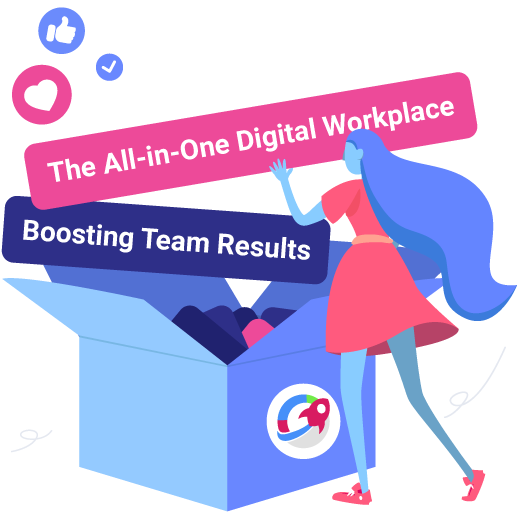
Learning how to optimize your buyer's journey it's something that brings the best solutions and decisions for your business in the long run. Find out how to create content targeted to each stage.
Executive Summary:
Learning how to optimize your buyer's journey it's something that brings the best solutions and decisions for your business in the long run. Find out how to create content targeted to each stage.
The idea that someone searches for something clicks on your website, and buys right away – is simply not realistic. Rather, people always start with a problem that will send them through a process of researching a solution, evaluating each, and then deciding on a purchase. This broadly occurs in three stages:
86% of senior-level marketers say it’s critical to create a cohesive buyer’s journey
The buyer’s journey can be summarized simply as “the customer’s path to purchase” during which they research a problem, find potential solutions to it, and then choose one of those solutions.
By analyzing the buyer’s journey, you can conceptualize the path of a prospect. The result? You can create content targeted for each stage of the buyer’s journey.
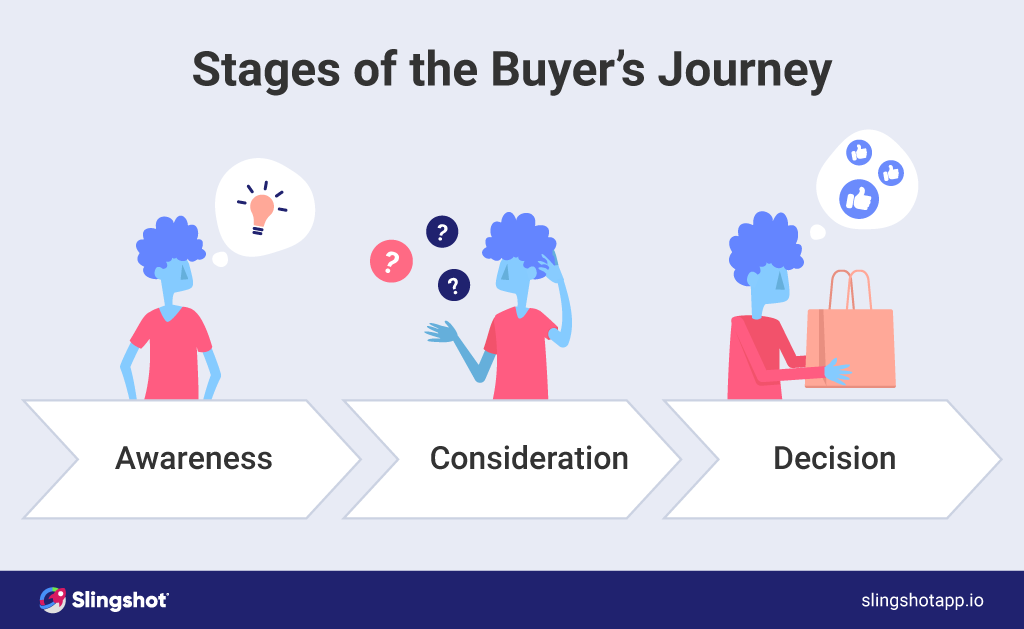
Another common way of viewing the buyer’s journey is through what’s called the buying funnel, or sales funnel, an inverted pyramid that shows the stages of the buyer’s journey vertically.
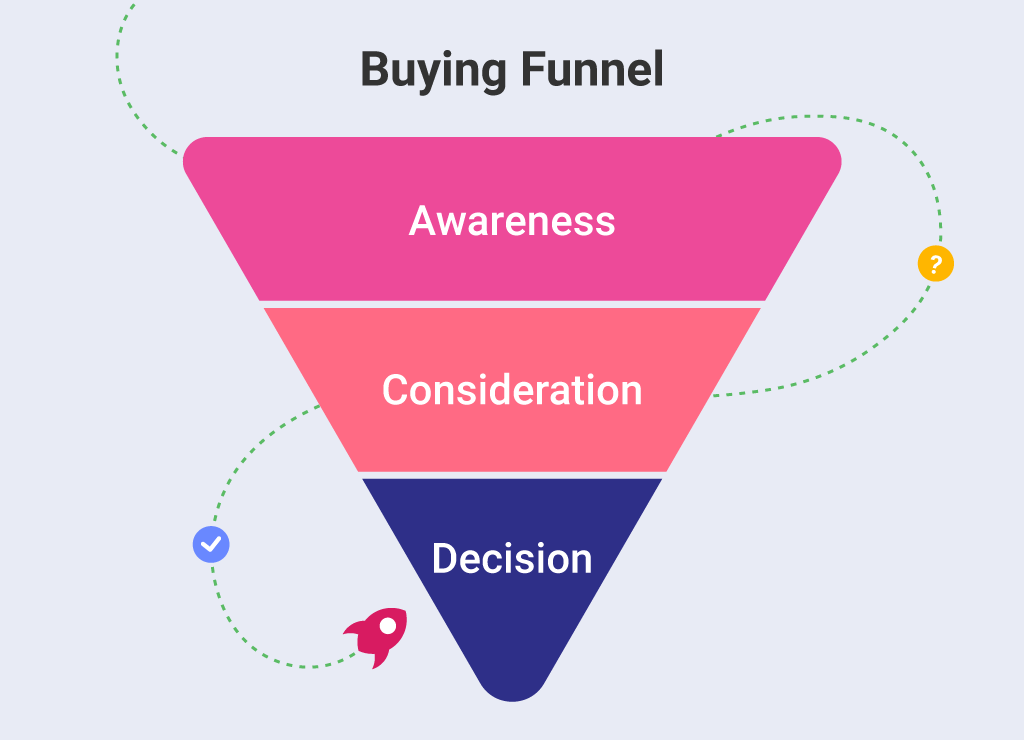
Awareness Stage
Consideration Stage
Decision Stage
The buyer’s journey helps you understand the kinds of questions your customers will ask when looking for a solution to the problem you hope to address. Buyers that are only learning about their pain points or who are exploring potential solutions will want much different content than someone who is ready to make a purchase. If you know what your personas are looking for at each stage of the buyer’s journey, you can create content that is better tailored to their needs. Instead of going out to find them, they’ll find you naturally during their search for information.
Many companies focus their marketing efforts at the bottom of the sales funnel and try to reach customers when they are ready to make a purchase decision. However, there are many opportunities to win a customer’s trust and business higher up in the funnel. After all, 96% of website visitors aren’t even in the decision stage.
61% of respondents to a DemandGen report chose vendors delivering content appropriate for each stage of the sales process
It is important to create top-quality content aligned with each stage of the buyer’s journey that ranks high in search engine results. This will improve your product’s credibility and remain top of mind to your audience as they search for solutions. On average, B2B buyers perform 12 searches prior to visiting a specific brand’s site.
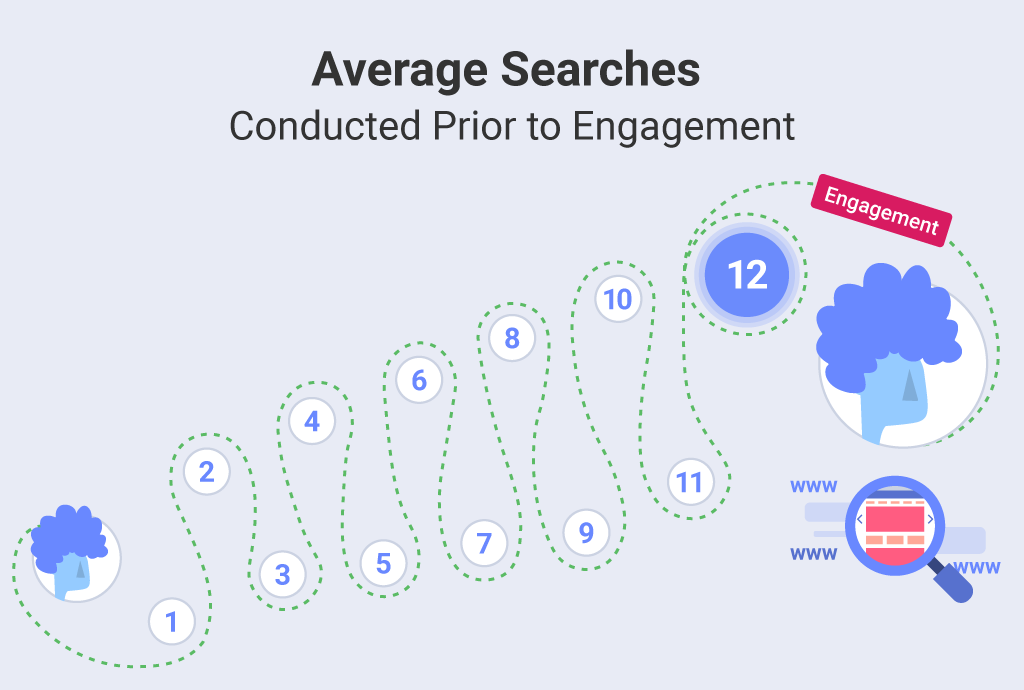
Ideally, you want content targeting the prospect’s pain points at specific moments along the journey and offering content that addresses their issues. For example, awareness-type content might include:
Decision-stage content, on the other hand, will look much different. Buyers are looking for trials, demos, pricing pages, customer references, and support options.
The truth is, breaking down the modern-day purchasing process into these three stages that buyers move through is simplistic. You can’t assume anyone will follow these stages in a linear path as that’s not how most buyers think.
The buyer’s journey will be staggered and could be repeated several times.
Think of it as a supermarket. You are there to solve a problem — we all need to eat! Each store is designed similarly, often with the produce section being the entry point, followed by seafood and meats, then by dairy, and with aisles in between categorized to fill your recipes so you can quickly find what you need — in a sequential path. However, there are times when you know you just need milk and eggs and cut directly there. Or even worse, when you forget the bread and need to go back to start!
So, too, the buyer’s journey may be more like a trip through a maze. He or she may go from awareness to consideration and then pause for months as he or talks with colleagues or executives or follows industry publications. He may involve others who have input into the buying decision. And if the proposed solution isn’t approved, the buyer may need to restart their research with a different approach.
If the buyer’s path to purchase isn’t linear, then, how can you structure your content so that it’s effective? What can you implement into your strategy?
Content mapping is a great method to follow. This allows you to map content to the stages of the buyer’s journey by using identifiers to where your potential customer might fall in their journey.
To provide an example of how a user might move through the buyer’s funnel, we’ll use Lauren, Director of Marketing at a software company. She’s an expert in digital marketing, but she’s unhappy with her reporting capabilities. She needs to generate regular reports to sales, executive management, and internal purposes, yet she’s still relying on Excel spreadsheets, which consume too much time. And she’s unhappy with her visuals and believes newer tools are available. We’ll describe Lauren’s journey and how we might target her with Slingshot content.
Lauren knows she has a problem and needs to educate herself. She needs high-level, educational content that will help her to scope out the issue she’s facing around data analytics and the range of solutions in the market.
Below are some “Awareness” search terms or questions Lauren might use:
As she begins her search, she comes across a few of our Slingshot blogs with titles such as Top KPIs to Include in Your CMO Dashboards to Get Great Results and The Ultimate Guide to Data Visualization: Time to Get Good. She also views a few of our explainer videos and does research in other places, like reading industry reports from Gartner and other market researchers. She’s also viewing other vendor solutions.
Entering the “Consideration” stage, Lauren’s identified the various approaches, including standalone data analytics apps with visualization/dashboarding, embedded analytics software, tools that include a data analytics/visualization capability, and consulting groups that offer data analytics/visualization services. After looking at consulting services she rules them out as it would take too long each month and would be very costly. She decides she wants a data analytics tool that she could use easily each month.
She’s seen blogs and read a few whitepapers by Looker, Power BI, Domo, and Slingshot, and now wants to get more details about the platforms, what’s included in each one, how they integrate with other tools, and cost.
She’s reviewed Slingshot blogs and has downloaded a few white papers, providing her email information in the process. We begin sending emails inviting her to our webinars and we send blogs and videos describing Slingshot’s data analytics features. We use personalization in our web pages and Hello bar. We offer a free trial and we start sending our newsletter.
Now, she starts searching for more specific info:
At this point, she’s narrowed her search to a few vendors including Slingshot. While there’s pretty much feature parity across the vendors, she notices something that stands out: Slingshot not only offers an easy-to-use data analytics and visualization/dashboarding capability, but it also includes integrated project management and team collaboration tool. At Lauren’s company, they still rely heavily on emails for team communications and don’t have an effective team collaboration tool that also includes project management, chat and content.
This ultimately proves to be the deciding factor and she opts to purchase Slingshot.
Throughout the buyer’s journey, we want to know how our content is performing. It’s part of being a data-driven organization that puts data at the center of the decision-making process. And it’s a mindset that the best companies are adopting. According to a study by Statista, 62% of business leaders say that a fast decision-making process is the number one advantage of becoming data-driven.
This was confirmed in the recent 2022 Infragistics Survey Report in which 79% of respondents noted an increase in interest in business intelligence and data analytics tools in 2021. And 71% expect their focus on business intelligence to increase in 2022.
To measure how your content performs, you will want to view different metrics for each stage. In terms of brand awareness in stage 1 of the buyer’s journey, pay attention to high-level metrics and key performance indicators. These include things like the number of readers, the number of page views, top-performing pages, engagement rate, time on site, and articles viewed.
In the consideration phase, pay special attention to metrics such as newsletter sign-ups, number of returning visitors, form submissions, and resource downloads.
The decision phase is where you get down to where people actually buy. They already trust your business, and they’re familiar with your products and what your business represents.
Now, it’s the time to dig deep into metrics to see how your content is performing in this decision stage, for example, the number of conversions overall and by territory, new seats, and other metrics like how relevant web pages are performing.
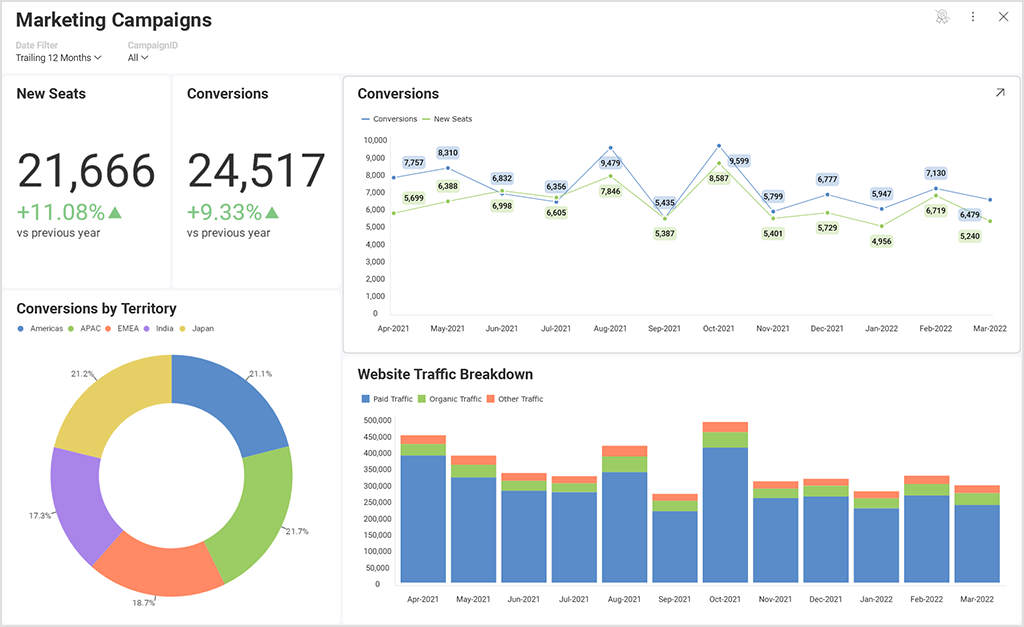
In today’s over-saturated markets, content continues to be a key underpinning of most digital marketing operations. By understanding your prospect’s likely buying journey and offering up relevant and useful content at each stage, you’ll have the greatest chance of raising awareness of your product, increasing engagements, growing leads, and closing more deals.
SHARE THIS POST